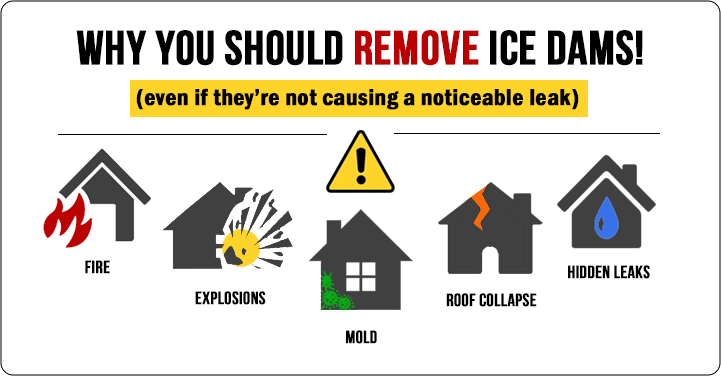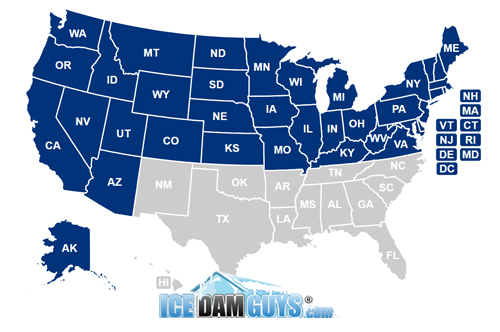Not All Ice Dams Are Created Equal

Courtesy of goldiesroom.org
A headache is not just a headache. It can be a migraine. Or a caffeine headache if you didn’t get your morning cup of coffee. Or a hangover because you had a few too many the night before. How to get rid of your headache depends on what type you have.
It’s similar with ice dams. Although there’s only one good way to rid your roof of an ice dam (by steaming it), there are many different species of ice dams. How easy or difficult it will be to remove your ice dam (or how time consuming it will be) depends on what type of ice dam is covering your roof.
Ice dams come in many different shapes and sizes based on where they’re formed. Here are all the areas of your roof where ice dams tend to be most common:
– Along the overhangs of your roof / where the gutters are (or would be)
– In the valleys
– On or near the vents
– Around the chimney or exhaust vents/pipes
– Or any combination of the four
There are also two different types of ice that can form an ice dam:
Type 1: White, soft, honeycombed ice. This is more common during warmer weather, when the low temps are above freezing (even at night) and ice begins to slowly and steadily thaw.
Type 2: Black, hard ice. This type of ice dam tends to form in really cold weather. (The ice isn’t literally black; it’s actually extremely clear, but just looks black when it’s covering dark shingles.) This type of ice is most common when the weather is consistently below freezing (even during the warmest part of the day).
Each type of ice appears about 50% of the time. They’re equally common, in my experience. It really just depends on the average outdoor temperature.
The “black” ice usually takes longer to remove because it’s harder and denser than the softer, whiter variety. It also tends to take longer to form on your roof – usually having melted and refrozen several times over the course of many weeks.
What type of ice does your ice dam consist of? It’s hard to say until you’ve removed the snow that covers it and you’ve gotten a good look at it from an aerial view. In some cases it’s impossible to tell until you’ve actually begun to steam it away. Black ice almost always adheres to the shingles, whereas white ice typically has already “popped” free from the shingles. In instances where the white ice has popped free from the shingles, steam can be directed into the tiny gap between the roofs surface and the ice. This allows the removal of the ice dam to go much more smoothly, because instead of trying to melt the ice from the top down, you can “cut” large chunks of ice off the roof with a little bit of strategic steaming.
It’s not always the case that what you see is what you get.
Sometimes it may look like you have a 12-inch-thick ice dam along the edge of your overhang, but from the ground you may not know how far that ice extends up the slope of your roof. Sometimes the ice crawls back 2-3 feet up your roof, or it may extend up 4-10 feet (or more).
You probably won’t know how far the ice dam goes up your roof (towards the peak) until you’ve removed all the snow that’s covering the ice dam. We’ve seen ice dams that stretch all the way to the peak of the roof! Never judge a book by its cover – or underestimate the size of an ice dam.
Long story short…an ice dam is not an ice dam. This is precisely why a professional ice dam removal company will always work “by the hour” and not “by the job”






















One comment
What I was trying to relay is that not all ice dams are created the same “an ice dam is not an ice dam”. Maybe I could have worded that better.
Leave a Comment